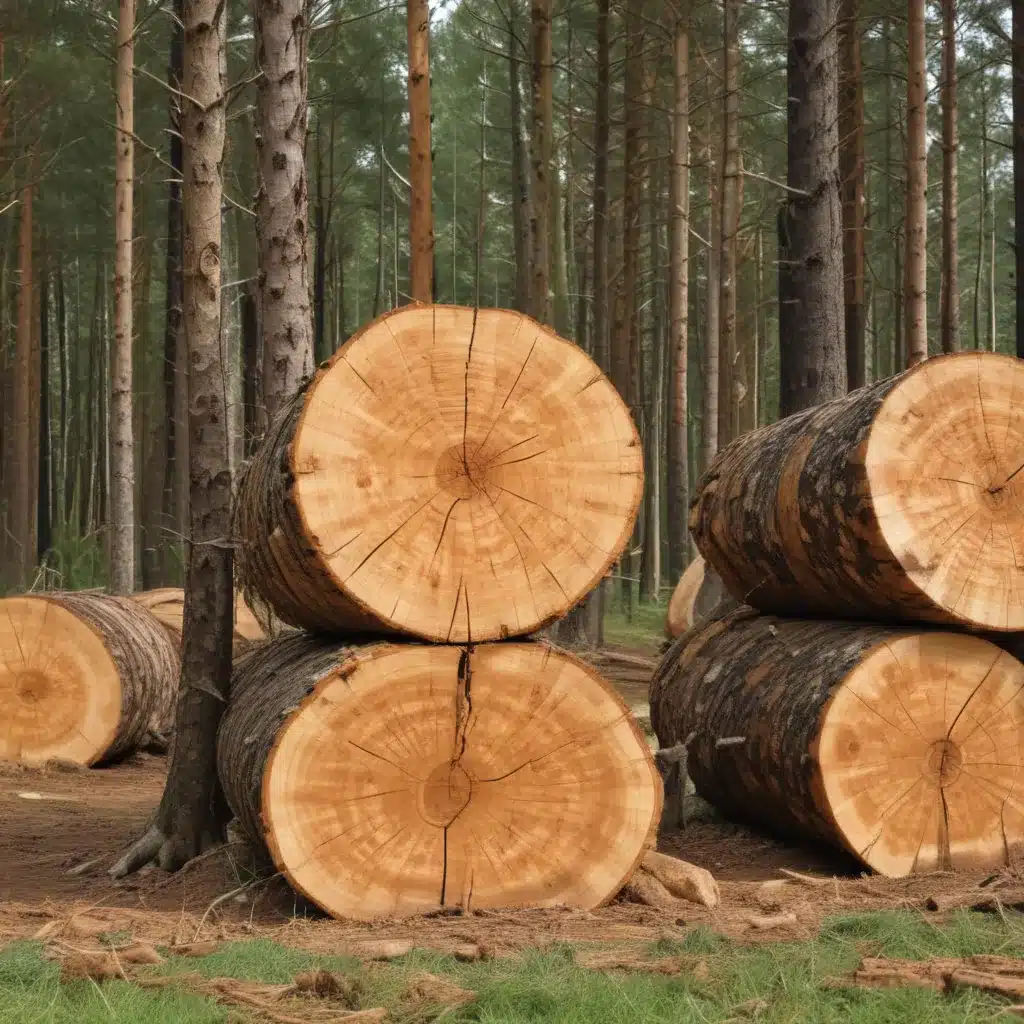
Effective forest management strategies might want to balance multiple objectives – from maximising timber production to preserving biodiversity and ecosystem services. In today’s dynamic forestry landscape, a one-size-fits-all approach simply does not suffice. Innovative techniques and an understanding of stand dynamics are essential to optimising forest resources.
Now, this might seem counterintuitive when managing forest ecosystems…
One promising avenue lies in the strategic management of uneven-aged forest stands. By carefully cultivating a diverse mix of tree species and age classes, forest managers can unlock significant gains in timber yield, stand resilience, and environmental benefits. In this comprehensive guide, we’ll explore the key principles and optimisation strategies for unlocking the full potential of uneven-aged forest management.
Transitioning to Uneven-Aged Stands
Conventional forestry has long favoured even-aged monocultures, relying on clearfelling and replanting to maximise timber output. While this approach can deliver impressive short-term yields, it often comes at the expense of long-term sustainability and ecological integrity. Uneven-aged stands, in contrast, exhibit a diverse mix of tree ages, sizes, and species – more akin to natural forest dynamics.
The benefits of uneven-aged management are manifold. By maintaining a continuous canopy cover, uneven-aged stands better protect soil, regulate microclimate, and provide diverse habitats for flora and fauna. Selective harvesting techniques allow for gradual, targeted removals, minimising disruption to the overall stand structure. And crucially, this approach can deliver superior timber yields over successive rotations.
Of course, transitioning an even-aged plantation to an uneven-aged system requires careful planning and execution. Silvicultural methods like group selection, shelterwood systems, and single-tree selection might want to be tailored to the specific stand conditions and management objectives. Modelling tools and decision support systems can aid foresters in optimising these complex stand-level interventions.
Optimising Timber Yield
At the heart of uneven-aged management lies the challenge of balancing timber production with ecological resilience. By thoughtfully manipulating the stand structure, foresters can unlock significant gains in both timber quality and quantity.
Timber Production: Selective harvesting techniques, such as high thinning and target diameter cutting, allow for the gradual removal of mature, high-value trees. This not only avoids the abrupt changes associated with clearfelling, but also promotes the development of younger, more vigorous cohorts. Careful control over species composition and age distribution can further enhance overall productivity.
Timber Quality: Uneven-aged stands often exhibit superior stem form and wood properties compared to even-aged monocultures. The presence of shade-tolerant species, such as spruce and fir, can yield high-quality saw logs, while pioneer species like birch and aspen contribute valuable pulpwood. Selective harvesting techniques also minimise damage to residual trees, preserving timber quality.
Timber Harvesting: Logging in uneven-aged stands requires specialised equipment and methods to navigate the complex stand structure. Low-impact technologies, such as cable yarding and small-scale harvesters, can help mitigate soil disturbance and damage to remaining trees. Careful harvest planning, including the use of decision support tools, is essential to optimise the timing and intensity of interventions.
Modelling and Simulation
Effective uneven-aged management relies on a deep understanding of stand dynamics and the ability to forecast the impacts of silvicultural interventions. Growth and yield models, informed by long-term research, provide crucial insights into the complex interactions between tree species, age classes, and environmental factors.
Forestry Contracting offers a range of decision support tools that can help foresters plan and optimise their uneven-aged management strategies. These include individual-tree growth models, regeneration simulators, and multi-criteria optimisation algorithms. By integrating real-world data with advanced modelling techniques, forest managers can explore a variety of scenarios, evaluate trade-offs, and devise tailored solutions for their unique stand conditions.
Scenario analysis, in particular, can be a powerful tool for visualising the long-term consequences of different management regimes. Foresters can test the impacts of varying thinning intensities, species compositions, and regeneration strategies – all while accounting for factors like climate change, market trends, and risk.
Ecological Considerations
Uneven-aged forestry not only optimises timber production, but also maintains the ecological integrity of forest ecosystems. By preserving a diverse mosaic of age classes and species, this approach supports a wide range of flora and fauna, enhances carbon sequestration, and bolsters the provision of crucial ecosystem services.
Biodiversity: Uneven-aged stands provide a heterogeneous habitat structure, catering to a broader suite of species compared to even-aged monocultures. The retention of old-growth elements, such as large-diameter trees and snags, creates vital refugia for specialised organisms. Gradual forest dynamics also allow for the gradual transition of species compositions, minimising abrupt changes that can disrupt sensitive ecosystems.
Ecosystem Services: Uneven-aged forests excel at regulating essential environmental processes. The continuous canopy cover helps to regulate microclimate, prevent soil erosion, and maintain hydrological cycles. The diverse mix of tree species and age classes also enhances carbon sequestration, with older trees complementing the rapid growth of younger cohorts.
Habitat Preservation: Many endangered or threatened species, such as the spotted owl and the Siberian flying squirrel, thrive in the complex, multi-layered environments of uneven-aged forests. By preserving critical habitat elements, like large snags and downed wood, forest managers can support the long-term viability of sensitive wildlife populations.
Conclusion
As the forestry sector transitions towards more sustainable and resilient practices, the strategic management of uneven-aged stands emerges as a compelling solution. By optimising timber yield, ecological integrity, and climate change mitigation, this approach offers a pathway to a future-proof, multifunctional forestry model.
Through the judicious application of silvicultural techniques, decision support tools, and ecological insights, forest managers can unlock the full potential of uneven-aged stand management. By striking the right balance between production and conservation, we can double-check that the long-term prosperity of our forestry resources and the ecosystems they support.
Example: Forest Road Maintenance Program 2023

